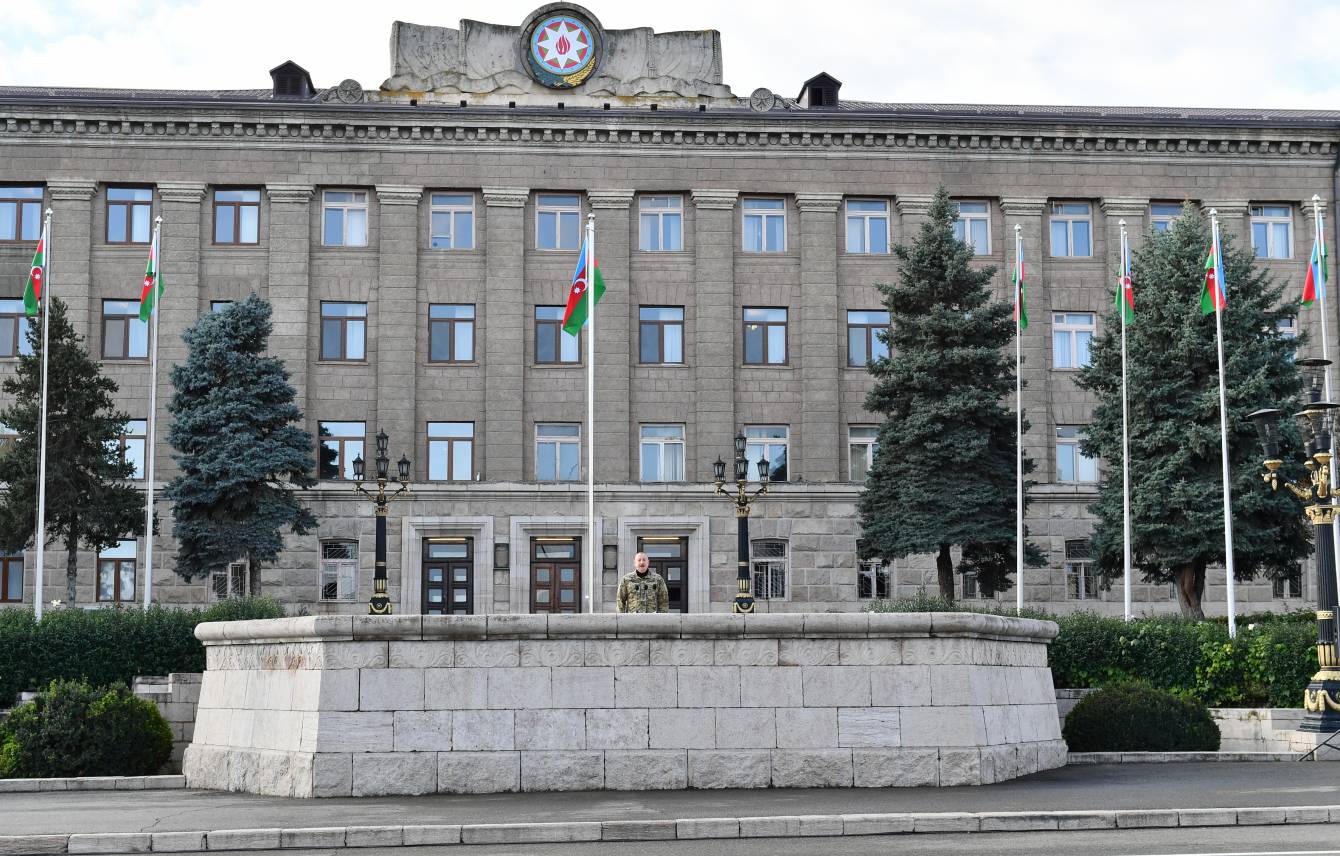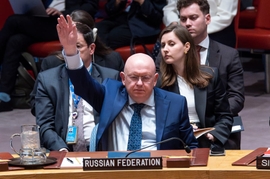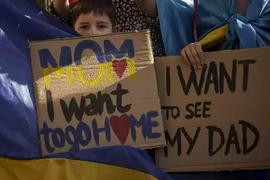The residents of Khankendi in the Karabakh region of Azerbaijan will cast their votes in the upcoming snap presidential elections.
Mazahir Panahov, Chairman of Central Election Commission, called this a “historic moment”.
“Azerbaijani voters will cast ballots in exactly that building (administrative center of the collapsed Armenian separatist regime). We will add our citizen ticking the first ballot paper, an 18-year-old citizen attending his first election to history,” Panahov said, calling the media to engage actively in the process, according to local media reports.
Panahov pledged to award the first media outlet broadcasting the elections live from the liberated territories, including Khankendi and Khojaly.
Snap presidential elections are scheduled to take place in 2024, according to the order signed by President Ilham Aliyev on December 7. The upcoming polls will occur one year earlier than the Constitutional termination of President Aliyev’s current term in 2025.
The last presidential elections were held in 2018, half a year earlier than the scheduled date, securing the new term for President Aliyev. As a result of the referendum held in 2016, the Constitution of Azerbaijan was amended to extend the presidential term from five to seven years.
The upcoming elections will take place across all territories of Azerbaijan for the first time in more than 30 years. The former IDPs, expelled by the Armenian forces in the First Karabakh War in 1991-1994 and resettled by the Azerbaijani government after the 44-day war of 2020, will go for the polls in their homelands.
Armenia and Azerbaijan had been in an armed conflict for nearly 30 years over the Karabakh (Garabagh) region, which is an internationally recognized territory of Azerbaijan. Armenia launched full-blown military aggression against Azerbaijan following the Soviet Union’s dissolution in 1991. The bloody war lasted until a ceasefire in 1994 and resulted in Armenia occupying 20 percent of Azerbaijan’s internationally recognized territories. Over 30,000 Azerbaijanis were killed and one million expelled from those lands in a brutal ethnic cleansing campaign conducted by Armenia.
On September 27, 2020, the decades-old conflict took a violent turn after Armenia’s forces deployed in the occupied Azerbaijani lands shelled military positions and civilian settlements of Azerbaijan. During the counter-attack that lasted 44 days, Azerbaijani forces liberated about 300 settlements, including the cities of Jabrayil, Fuzuli, Zangilan, Gubadli, and Shusha, from nearly 30 years of illegal Armenian occupation. The war ended in a tripartite statement signed on November 10, 2020, by Armenia, Azerbaijan and Russia. Under the statement, Armenia also returned the occupied Aghdam, Kalbajar, and Lachin districts to Azerbaijan.
Khankendi, as well as certain parts of Khojaly and Khojavand districts, remained within the temporary monitoring zone of the Russian peacekeeping mission deployed in certain parts of the Karabakh region after the 2020 war.
Despite the legally binding demands on the withdrawal of the Armenian forces from the Karabakh region, the largest portion of the troops was stationed in Khankendi along with the other settlements, including Khojaly, Aghdara, Khojavand, and Asgaran. The peacekeepers failed to enforce the withdrawal despite their relevant obligations.
Since 2020, the Armenian army formations committed dozens of provocations, causing loss of life on the Azerbaijani side.
Azerbaijan Armed Forces launched on September 19 local anti-terrorist measures to neutralize illegal Armenian armed formations and their military infrastructure in the Karabakh region. The operation came on the heels of the intensifying attacks on the Azerbaijani positions and deadly mine incidents killing four police officers, two road construction workers, and two servicemen of the Azerbaijani army.
By the time of the cessation of hostilities, the Azerbaijani military disabled artillery systems, radio-electronic warfare, military equipment, ammunition depots, military strongholds, and shelters of the Armenian army formations stationed in the Karabakh region. In addition, more than 90 combat posts and strategically important positions of the Armenian military formations were taken under control during the one-day operation until September 20.
“The operation was held without any damage to civilian infrastructure, any casualty among civilians – we announced that if the army laid down its weapons, we would stop and allow them to leave. So, it lasted less than 24 hours. After they announced that they surrender, all the actions on the ground had stopped,” President Aliyev said in a recent international forum in Baku.
On September 20, the illegal separatist regime requested through the Russian peacekeeping command to cease the local anti-terror activities by agreeing to withdraw and complete disarmament of the Armenian armed formations.
On September 28, the separatist regime in the Karabakh region announced self-dissolution and called on the Armenian residents of the Karabakh region to become acquainted with the conditions of reintegration presented by Azerbaijan, in order to subsequently make an independent and individual decision on the possibility of staying in (or returning to) the Karabakh region.
President Aliyev hoisted the state flag of Azerbaijan in Khankendi on October 15.







 Azerbaijan and Armenia started the process of demarcation of their border on Tuesday, with the installation of the first border markers based on ge...
Azerbaijan and Armenia started the process of demarcation of their border on Tuesday, with the installation of the first border markers based on ge...
 Armenian sappers commenced on Monday mine-clearance operations in the territories adjacent to the Saint Mary Church in village of Voskepar (Armenia...
Armenian sappers commenced on Monday mine-clearance operations in the territories adjacent to the Saint Mary Church in village of Voskepar (Armenia...
 Iran and Pakistan have signed eight cooperation documents in various fields, and agreed to strengthen ties to fight terrorism in the region.
Iran and Pakistan have signed eight cooperation documents in various fields, and agreed to strengthen ties to fight terrorism in the region.
 As the conflict between Ukraine and Russia escalates, the strategic importance of Kharkiv, Ukraine's second-largest city, has come sharply into focus.
As the conflict between Ukraine and Russia escalates, the strategic importance of Kharkiv, Ukraine's second-largest city, has come sharply into focus.
 President Aliyev emphasized the critical role of the North-South Transport Corridor in fostering transport cooperation between Azerbaijan and Russi...
President Aliyev emphasized the critical role of the North-South Transport Corridor in fostering transport cooperation between Azerbaijan and Russi...



